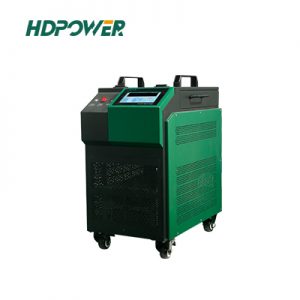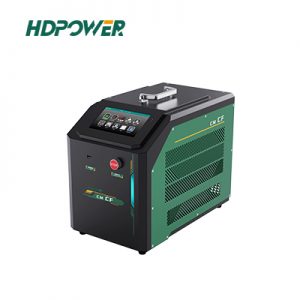Electric vehicles (EVs) are transforming transportation, but their lithium batteries—costing up to 40% of the vehicle’s value—demand meticulous EV lithium battery care to prevent premature failure and maximize ROI. HDPower, a leader in battery technology, combines electrochemistry research with real-world testing to deliver these five non-negotiable rules for optimal battery health.
Rule 1: Active Cell Balancing via Multi-Channel Independent Charge/Discharge – Eliminating Imbalance at the Hardware Level
Scientific Challenge: The Cost of Cell Imbalance
Lithium-ion battery packs in EVs suffer from inherent cell-to-cell variations due to:
- Manufacturing tolerances (capacity ±5%, internal resistance ±10%)
- Operational disparities (temperature gradients, local aging)
- Charge state divergence during deep cycles (SOC difference >15% in 500 cycles)
Consequence: Weak cells limit pack capacity by up to 40% and accelerate degradation by 3×.
Traditional passive balancing (resistive discharge) wastes energy as heat and fails during discharge.
HDPower Solution: The Active Battery Balancer
Unlike AI-dependent predictive systems, HDPower’s Active Battery Balancer implements hardware-driven, per-channel charge/discharge control. This advanced Battery Balancer directly transfers energy between cells – without dissipation – fundamentally overcoming imbalance.
Core Technology:
- Independent Multi Channels
- Without interfering with each other, ensuring that each battery cell will not be over-charged & discharged.
- High performance equalizing
- The maintenance process supports end depolarization, which guarantees a highly consistent effect after equalization.

Rule 2: Master the 20%–80% Charging Threshold
Science Insight: Charging beyond 80% induces lithium plating on anodes, while discharges below 20% cause copper shunts and irreversible capacity loss.
HDPower Solution:
- Lithium Battery Charger: Automatically caps charging at 80% and halts discharge at 20%, extending cycle life by 25%.
- User Tip: Enable “Range Mode” only for long trips to avoid sustained high-voltage stress.

Rule 3: Revolutionizing EV Lithium Battery Care with Compact, Wide-Voltage Flexibility: HDPower Lithium Battery Charging & Discharging Tester
For EV owners and fleet managers, managing lithium batteries across diverse voltage requirements has long meant juggling bulky equipment—until now. Introducing HDPower’s Lithium Battery Charging & Discharging Tester, A device weighing only 25 kg to deliver DC 2–500V adaptive charging/discharging, cutting hardware weight by 70% while extending battery lifespan through electrochemistry-optimized protocols.
Why Voltage Flexibility & Portability Redefine EV Lithium Battery Care
Traditional chargers force compromises:
- Fixed-voltage systems fail to support multi-battery fleets (e.g., 48V hybrids + 800V luxury EVs).
- Bulky thermal management increases weight (typical units: 5–10 kg), limiting mobility.

Conclusion: Transform EV Battery Care from Cost Center to Strategic Asset
HDPower’s three science-backed rules for EV lithium battery care—adaptive voltage management, hardware-driven active balancing, and thermally resilient protocols—redefine how industries and individuals preserve battery health. By merging electrochemistry principles with engineering innovation, these protocols unlock unprecedented value.
In the electrified future, EV lithium battery care separates leaders from followers. HDPower’s rules transform batteries from disposable components into enduring assets—powering sustainability, profit, and planetary health.





